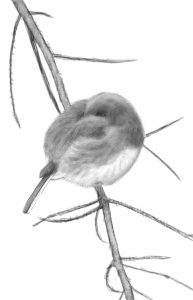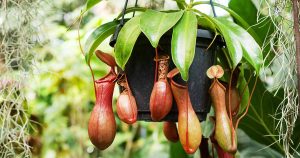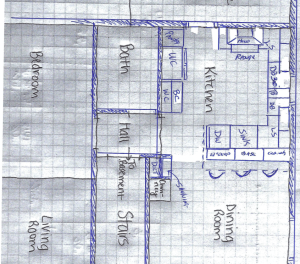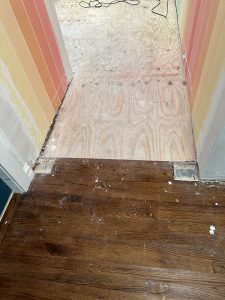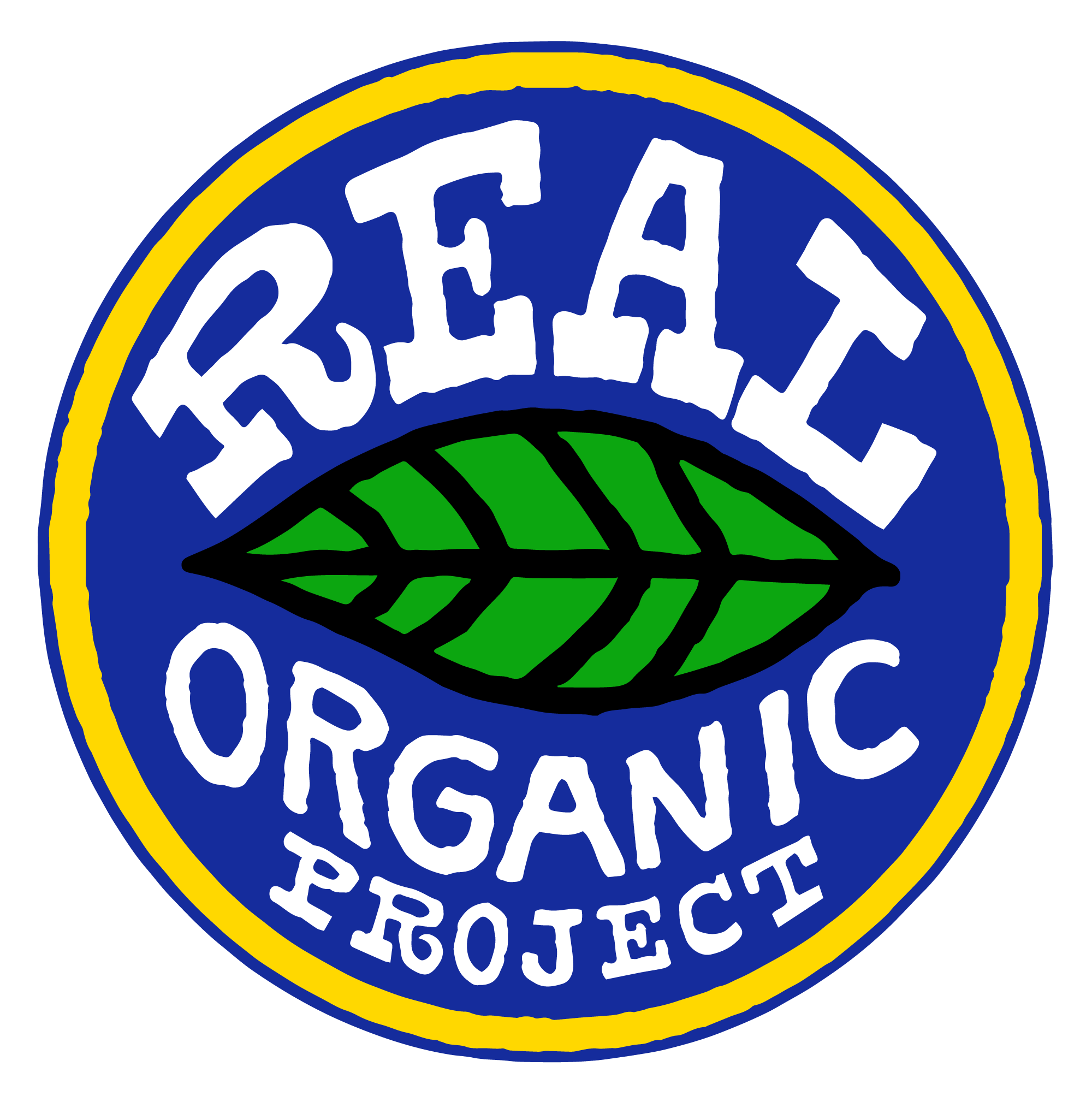
ORGANIC FARMING and gardening have always been based on the principle of feed the soil, not the plant. I recently got some expert advice for doing that, and also learned more about why our diligent soil consciousness matters so much, with the co-directors of the nonprofit Real Organic Project, a farmer-led organization advocating for food produced in concert with healthy soils and pastures.
Dave Chapman and Linley Dixon are co-directors of the Real Organic Project, a farmer-led movement since 2018 that created an add-on label to USDA Organic to differentiate organic food that is soil-grown, not hydroponic, and animal products that are pasture-raised. Dave runs Long Wind Farm in Vermont; Linley farms vegetables at Adobe House Farm in Southwest Colorado.
The Real Organic Project is holding an all-day conference featuring organic farming leaders on Saturday, Sept. 28th at Churchtown Dairy in Hudson, N.Y.
Read along as you listen to the Sept. 9, 2024 edition of my public-radio show and podcast using the player below. You can subscribe to all future editions on Apple Podcasts (iTunes) or Spotify (and browse my archive of podcasts here).
 soil-supporting tactics, from the real organic project
soil-supporting tactics, from the real organic project
Margaret Roach: I’m praying for rain. How about you guys? I need a weather report [laughter].
Linley Dixon: Oh man, we just got hail in Southwest Colorado a week ago. So fortunately about half of our farm is covered, because we know it comes maybe one in every three years. So you roll the dice for the outdoor production.
Margaret: Oh my goodness. Dave, you’re in the Northeast, like I am. I don’t know how you’ve been doing, but it’s been dry here.
Dave Chapman: Yeah, my entire production farm is undercover. It’s in a glass greenhouse, so we add water when we need to add water.
Margaret: Yeah, I think I might be getting a greenhouse for my property [laughter].
So I wanted to first just do a mini-version of a little background about organic, and about the Real Organic Project. So when USDA Organic was developed, sort of the language around that, and you’ve told me this before, Dave, when we’ve spoken on the phone, it wasn’t just about the absence of pesticides, it was about soil health. And then things have changed somewhat. Some of the original rules aren’t enforced quite as rigorously, and some modern farming methods, like hydroponics, maybe don’t involve soil at all. And oh my goodness, a little bit confusing. But I wonder if you could maybe give us the brief version of what’s organic? What do you think organic is? [Laughter.]
Dave: Yeah, so just to say, Margaret, that when the USDA got involved, organic was already 60 years old as a political agricultural movement. So they didn’t invent it, they just came late to the party, and they came to help. Well, actually, they came very reluctantly to help. Congress instructed them to help. So organic existed as an understanding, and as a collection of principles about how to farm. And it was created in response to the creation of chemical agriculture. And it was based on farming that was thousands of years old, but it became a political movement around 1940.
And those principles, indeed, had to do with cultivating life in the soil, living organisms: bacteria, fungi, and a gazillion little critters. And together they make a community, an ecosystem in the soil, that for a very long time has produced the food that we like to eat, that’s good for us. So, yes, it was intended to not use chemical pesticides, but it was also much more than that. It was about what you do in your relationship with the land, rather than just what you don’t do.
 Margaret: Right. And one of the things, and then I think, Linley, you probably told me about this first, a couple of years ago when we spoke the first time, I didn’t understand really that a lot of the stuff at the supermarket labeled “organic” doesn’t come into contact with the soil at all anymore, both plant food and animal food, animal-based foods. So can you explain that part to us because it is a little confusing to a person like myself, who thinks of growing plants in the soil, and has neighbors who raise animals in pastures and so forth.
Margaret: Right. And one of the things, and then I think, Linley, you probably told me about this first, a couple of years ago when we spoke the first time, I didn’t understand really that a lot of the stuff at the supermarket labeled “organic” doesn’t come into contact with the soil at all anymore, both plant food and animal food, animal-based foods. So can you explain that part to us because it is a little confusing to a person like myself, who thinks of growing plants in the soil, and has neighbors who raise animals in pastures and so forth.
Linley: Yeah, it’s happened at different food sectors at different times. But as soon as the, I’ll just call it big ag or the big food system, as soon as they realized there was money in organic, all of a sudden, they all wanted to be organic, too. And instead of changing the way they were producing food, they started to apply pressure to both the USDA and to certifiers. And some of these certifiers, these are the third-party inspectors of the farms, actually, to this day, still have really high integrity, and are not enforcing the law the same way that the USDA is enforcing the law.
So one of the first things that happened was actually a case where there was a giant confinement birdhouse for laying hens, and there was no outdoor access for the chickens to go out and scratch and collect bugs. And they can get up to a third of their diet from the pasture. And Baystate was the certifier, and they refused to certify them. Well, the USDA actually sued Baystate, and said, “You have to certify this operation.” And since then, about 70 percen or more now of the eggs that are organic on the shelf come from these confinement laying operations. We’re talking 200,000 birds in a building and, in many cases, they are two-story.
And so this was just a mismatch for how the law was written. It’s actually an incredibly good law, the Organic Foods Production Act. It’s just how the law is being enforced by the USDA. There’s a mismatch. So it started with eggs, and then it started to be a problem with dairy. The finishing of beef in CAFOs [Concentrated Animal Feeding Operations], and hydroponic has been the latest issue. And that’s how I met Dave was through fighting for tomatoes, cucumbers, greens, and herbs, mostly, peppers as well, are the products that you’re finding hydroponic now more and more on the shelves.
Margaret: I think you told me there were even hydroponic blueberries or something. I was just like, “What are you talking about?”
Linley: Oh, I missed berries, that’s one of the biggest.
 Margaret: How can that possibly be? It doesn’t even make sense, but O.K. All right, so that sets the scene a little bit. And then Real Organic Project starting in 2018, I believe, it’s sort of an add-on certification. And you have organic farmers who are members of it, who have this additional label that they can put on their products, whether plant crops, or animals, eggs, or whatever. And say it’s not just USDA Organic, but Real Organic Project, correct, that it’s an add-on certification?
Margaret: How can that possibly be? It doesn’t even make sense, but O.K. All right, so that sets the scene a little bit. And then Real Organic Project starting in 2018, I believe, it’s sort of an add-on certification. And you have organic farmers who are members of it, who have this additional label that they can put on their products, whether plant crops, or animals, eggs, or whatever. And say it’s not just USDA Organic, but Real Organic Project, correct, that it’s an add-on certification?
Linley: Yeah, we actually have a standards board that’s all farmer-led. And all the farms that sign up for it, they are meeting a higher standard that was set by that farmer-led board.
Margaret: And on your website, I believe you have a search tool that we can find the ones near us, the member farms. The most recent number I think I saw on your website… I don’t know how many there are, 1,100 or so farms at this point.
Linley: Yeah, that’s pretty close, yep.
Margaret: O.K., good. So let’s say today, just for the three of us [laughter] in a fantasy world, it’s up to us to define organic and advise listeners today on what you two… Because you’re experts in organic agriculture, and we have lots of organic gardeners listening, what you two believe are the key elements. What are the kinds of things that really go into fostering good soil health, being good stewards of the soil?
I think, Dave, one of the things you’ve said to me before is, and you attributed it to Eliot Coleman the term of where do we get our soil-improving amendments from, whether we’re a “self-fed” operation or we’re importing them. So maybe we could talk a little bit, start there a little bit.
Dave: Sure. So I would say that the heart and soul of organic farming is to ensure that there is organic matter being made available to the soil. And it can be grown in place, it can be brought from somewhere else, it can be animal manures. But that organic matter is basically things that were once living plants or went through an animal. And when it’s put in the soil, it provides the food source for this incredible community of microbial life. And from that, all good things flow. So I think that’s the real simple answer, is that you’ve got to return organic matter to the soil from whence it came. And great organic farming is very good at cycling that organic matter. And I would say bad chemical farming tends to not care about it at all because they can just apply the nutrients needed.
Margaret: Right. So we better pay attention to composting. We’d better-
Dave: Yes.
Margaret: Right? That seems like job one, if we’re going to be organic gardeners or farmers, is to do that recycling in a way that’s conscious and effective.
Dave: Absolutely. But, also, let’s not leave out green manuring. So you can grow your fertility, both before you chop the plants down, but say you’re just planting a little part of your garden with something like rye or some kind of clover, or best of all, a blend of those things. And they will do wonderful things for the soil, just through their roots. So if you can keep green things growing on the land, and then find some way to till it in or chop it up and compost it, that’s going to bring a lot of life to your soil, which will then, in turn, give really excellent crops.
Margaret: Right. And probably leaving the soil, not just open all the time, so to speak, but having something growing in it, I would imagine leads to less… I don’t know, I want to just say wasting, that’s not what I mean exactly [laughter], of the soil. But, yeah, it keeps the soil, I don’t know, together. I love field peas. Have you ever grown a cover crop of field peas? Maybe that’s not good on a large scale. But I’ve had fun with field peas, winter rye, I forget what else. Some kind of oats I feel like I used once, but I can’t remember. Yeah, and then you’re saying cut them down and either turn them in or compost. Thoughts?
Dave: One of the things that I’ve seen research on is how many nutrients that are not available in the soil, when you add a good diverse cover crop, they become available. And so you don’t necessarily need to bring it in in a bag, it’s already there. It’s just the soil test won’t show it. But there’s a lot of potassium and phosphorus in our soils, and many trace elements, that only become available in this dance of the microbes basically mining the soil, and exchanging those things with the plant roots for exudates.

Margaret: Right. You just said soil test. Linley, Dave, do you do soil tests regularly? Is that something that’s part of your process? Because I get so many comments and questions from readers saying, “Oh, my such and such isn’t doing well.” Name a plant, fill in the blank. “And so I’m fertilizing it.” Or, “I’m applying this potion to it,” or whatever, without a diagnosis and without any form of analysis. And that always worries me, this ready, shoot, aim kind of thing, as opposed to finding out what’s going on before we rush to judgment and treatment. Do you guys do… Linley, do you do soil tests? I’m sorry if it’s a naive question. Maybe you guys do them all the time.
Linley: No, it’s actually pretty funny because I entered organic, really, through academia. I was always a gardener growing up. But what the Organic Food Production Act did was actually create legitimacy and funding for some organic research. And I was one of the first, because I went into school; I graduated college in 2000, and that’s right when the law was actually coming into… It was passed in 1990, but then the regulations and the standards were being enforced in 2000. And so I had the opportunity to do a lot of this organic research. And everybody always laughs because I do not do soil testing.
Now, Dave will answer this differently, but I actually farm with these green strips in between my rows. And so the tractor and where I walk and harvest is always covered in a perennial green manure that I then mow a couple of times a season into the rows and then incorporate that.
And I always feel like… I actually have a funny story of Eliot Coleman walking away from me and a soil scientist, just really jamming out. And I went up to him afterwards, and I said, “Weren’t you interested in that fascinating conversation about long-term nitrogen storage?” And he said, “Not really, because I just know it works.” [Laughter.]
And that’s how I feel too, is that if you’re incorporating organic matter regularly into the soil, the system’s just working. And organic farmers are really good at cycling that organic matter. So if you have a diverse cover crop or a perennial strip, like I do, things like clover might break down a little bit earlier in the season, and a grass takes longer to break down. So incorporating this diversity actually makes it so that nutrients are released over the full season. And we just know it works. And so that’s what I rely on. But I know Dave does do soil testing, so I’ll let him answer that question.
Margaret: O.K.
Dave: I do soil testing fairly regularly, once a month, but I don’t put much stock in it. It’s just to take a look because our crop is a very high-value crop. And just to take a look. And the thing that tends to fluctuate, that we’re paying attention to, is potassium. And those are just greedy bastards when it comes to potassium. And they-
Margaret: So tomatoes, this is tomatoes?
Dave: Yeah. We grow tomatoes. And so if we feel that we’re headed low in potassium, because it actually tends to take more than our soil life can make available fast enough, so we’ll add a little bit of sulfate of potash, which is a mined of potash. And it will break down in the soil. We just put it on top. But otherwise, no, we don’t really, even though we do a lot of soil tests, we don’t put much heed to it.
Margaret: All right. So it’s just like a validation, or “just in case” kind of thing. You do it, but it’s not your guidepost. It’s not the only thing you’re looking at.
Dave: Right.
Margaret: Yeah. So I asked about compost before. And I was saying, or advocating for, if we’re going to have a “self-fed” operation, if we’re going to have an operation where we’re producing most of, or all of, or at least some of our amendments to support the soil, we have to have a way to process them. And I wonder, you guys probably have large compost operations, I would imagine. I don’t know, but are there any ahas that can trickle down, boil down, to the home-level user about the process of composting that you want to share?
My biggest aha probably was: I used to just dump whatever I had in a spot in the early years, and it was like I had big amounts of one thing in each area, based on what I’d been working on at that time. And I’ve learned to mix it up and almost layer it more methodically, spread it out. And also not to let it get bone dry, that’s another thing, because all those wonderful microbes in there probably don’t want to be in a completely dry environment. So I don’t know, I just wonder if you have any advice about compost?
Linley: Well, my compost comes from all of these homeowners that are close by. And I can’t believe that this stuff would’ve been going to the landfill if it weren’t for my farm. So the first thing I’d say is, please do it. You are throwing away this beautiful fertility that you can use. And I guess if you’re not a gardener, fine, but all your listeners are gardeners. So absolutely be composting, create space. And for sure, in my dry climate, and maybe if it’s too wet where you are, you would want to tarp to keep… If you’re getting a ton of rain, you might want to tarp it so that it actually… Because moisture level, you don’t want it too wet or too dry. You want those microbes to be breathing, but they need some moisture as well. So tarping helps you regulate it.
Margaret: Mm-hmm. Dave, any compost tip that you want to share quick?
Dave: We’re funny in America. If you look and read Albert Howard’s book, “An Agricultural Testament,” in which he learned about composting when he was meant to be an agricultural agent in India, and they were very good at it. It was an old and very refined art. And when I read that, and I started to experiment with carbon-nitrogen ratio, I came up with the peculiar thing that, in America, the thing that we seem to be short of is carbon. We have lots of nitrogen available all over the place. So you just have to get a balance of the woody, fibrous material, and the stuff that breaks down really easily, like grass clippings or manure or something. And you want to make it so it has a good carbon-nitrogen ratio, and it can breathe. And you can tell because if it doesn’t get warm, you didn’t get it right.
Margaret: Right, exactly, exactly. So now, both of you are growing undercover in some type of a roofed structure, in a greenhouse or whatever, I think, at least some of your crops. And does that mean that you don’t till? Or what about the soil surface? Because no-till is another subject that’s come up a lot lately as a soil-supporting tactic. And I just wondered your take on that?
Linley: Yeah, I’m going to dive in on that one. I was a mycologist, so I worked, even as a post-doc, in the fungal systematics lab. And so I know a lot about fungi. And I cringe every time I hear about tillage destroying the mycorrhizae because it’s just not true. There’s only 100 species of fungi that are mycorrhizae to start off with. And I get it, they’re really cool. But there’s tens of thousands, if not hundreds of thousands, of species of other fungi that are just saprophytes. And so if all we’re going after is the cycling of these nutrients, then let those saprophytic fungi do their job and break that material down in the soil, and release it for the next crop. If it just sits on the surface, those nutrients aren’t available. So growing your own fertility, for me, is the gold standard. And getting that fertility into the soil for the next crop requires tillage.
And the other piece about this is mycorrhizae do survive tillage. They have beautiful large spores that survive it but, also, the fungal fragments just re-germinate. So, really, there’s no harm to your mycorrhizae. Of course, when winter comes, the mycorrhizae die anyway because your crops die, all the weeds die, everything they were connected to dies. But they know how to survive. So they are surviving tillage, and the other fungi are really thriving if you feed them.
So fungal life actually really flourishes under tillage. And this is the biggest misconception going on right now in this topic of no-till. Maybe I’ll let Dave talk about why we think this misconception is happening, because the chemical industry is really thriving off of no-till being the gold standard as opposed to quality.
Margaret: I want to make sure we leave a minute to talk about the September event.
Linley: Oh, come to the September event and you will learn the answer to that question there [laughter].
Margaret: Yes. But meantime, Dave, are you a tiller? To till or not to till [laughter]?
Dave: I’m a tiller these days. I till once a year. But I’ve done no-till also. I’ve gone for some years without tilling. And either one can work. It’s challenging to manage no-till in a lot of gardens. And it can be done, it can be done very well. But tillage has been done for thousands of years very well. It can be done badly, too. It can be abused.
So if you just go in and use a rototiller to weed your paths every two weeks, that’s a really bad idea. But if you till occasionally and carefully, then it does really fire up. It increases the activity in the soil, and that is good for your plant. So I think that what’s happened is it’s become a very politicized issue. And there’s a lot of talk about no-till, but they pretty much remain silent on the fact that almost all of that no-till is chemical no-till, it’s with herbicides.
Margaret: Yes, well, and that’s not the Real Organic Project or USDA Organic [laughter].
Dave: No.
 Margaret: So in the last couple of minutes, Sept. 28 at Churchtown Dairy in Hudson, N.Y. Is this the second annual event, or have there been more than that? I remember there was one last year.
Margaret: So in the last couple of minutes, Sept. 28 at Churchtown Dairy in Hudson, N.Y. Is this the second annual event, or have there been more than that? I remember there was one last year.
Linley: Second annual.
Margaret: Yes. So, Linley, you want to tell us just… It’s a conference, it’s all day. There’s lots of people presenting.
Linley: That’s right, yeah. We just get the best lineup of people, mostly farmers. And we do these series of TED-style talks, but then we also create breakout sessions, timed about an hour each one, there’s two of them, to tackle specific topics. And tillage is one of the conversations that we’re talking about. Regenerative versus organic, small farm viability. We’ve got a great organic grain panel.
But for our TED-style talks, they’re about 18 minutes each person. We’ve invited for keynotes, Eliot Coleman, and Paul Holmbeck is coming in to talk about where organic is working around the world. And Tim Wise, he wrote a really good book about eating. It’s called “Eating Tomorrow.” And he talks about the harms of the green revolution, and the lies that the chemical industry has told, and presents a path forward as well. So specifically excited about those speakers.
Margaret: And, of course, you all have a podcast, which sometimes each of you host. And on your website is lots of other information that we, as eaters, not as farmers (because you have two tabs in the navigation, I think, for farmers and for eaters, yes?). So for the non-farmers among us that we can learn more about what you’re doing, and why, and how to participate. So I thank you both for taking time out today to talk to us about this, and about the importance of the soil, most of all.
prefer the podcast version of the show?

MY WEEKLY public-radio show, rated a “top-5 garden podcast” by “The Guardian” newspaper in the UK, began its 15th year in March 2024. It’s produced at Robin Hood Radio, the smallest NPR station in the nation. Listen locally in the Hudson Valley (NY)-Berkshires (MA)-Litchfield Hills (CT) Mondays at 8:30 AM Eastern, rerun at 8:30 Saturdays. Or play the Sept. 9, 2024 show using the player near the top of this transcript. You can subscribe to all future editions on iTunes/Apple Podcasts or Spotify (and browse my archive of podcasts here).
